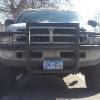-
Content Count
669 -
Joined
-
Last visited
Community Reputation
-2 A few mistakesAbout ncc74656

-
Rank
Regular Member
Contact Methods
-
AIM
tssncc
-
MSN
major9874@msn.com
-
Yahoo
incc74656i
-
Skype
incc74656i
Profile Information
-
Gender
Male
-
Location
st. paul
-
Interests
auto repair, off roading, computer building, gaming, strong man, cooking, building anything, welding.
-
Vehicle
24V diesel 99 ram
Recent Profile Visitors
-

twin cities MN, advice for shop that could work on 220V LED display board with micro controllers?
ncc74656 replied to ncc74656's topic in Amplifiers / Head Units / Processors / Electrical
defunct, its an older item -
i was hoping M5 (or someone else) might know of a place locally that does a mix of electrical work. i had a customer drop off a large LED sign board that runs off 220V mains with seriesed 110V inverters into about 88 separate micro controller boards that run off 24/12/5.6V and control small segments of RGB led's. the panel blows breakers upon power up. its beyond the scope of work that we do at my shop and wanted to give the customer and idea of maybe where to go.
-
i swear by the JL 13Tw5's i have installed them in many vehicles and they are hands down the best low pro sub i have ever heard
-

copper vs aluminum for terminals/blocks
ncc74656 replied to ncc74656's topic in Amplifiers / Head Units / Processors / Electrical
want to make sure im not deceiving myself. if i have 3 wires on a long run, going into a fuse holder and then a single short wire going from the fuse to the battery, it should be able to handle the current with out significant voltage drop due to the short run and low resistance, right? by the math the short run can but when paired with a long run behind it... i guess im not sure how to do the math when the wiring run changes size. so three 00 over 11 feet into a single 00 for 4 inches or so to carry around 600A. that will work right? -

copper vs aluminum for terminals/blocks
ncc74656 replied to ncc74656's topic in Amplifiers / Head Units / Processors / Electrical
brass is below al for conductivity right? just that its such a small part interconnecting that brass works just fine? -

copper vs aluminum for terminals/blocks
ncc74656 replied to ncc74656's topic in Amplifiers / Head Units / Processors / Electrical
fair enough. im going to play with teh copper. im worried about tapping through sheets of copper plate, if a thread isnt just right... could split the plates apart. its too bad i couldnt melt it down and pour it out into a different thickness bar :/ -

copper vs aluminum for terminals/blocks
ncc74656 replied to ncc74656's topic in Amplifiers / Head Units / Processors / Electrical
nice. well im going to try my hand at making some copper terminals for my 2nd battery up front. im still going to coat the other al ones i made and just see how they get on. i REALLY love the idea of threaded holes and i dont think i can do that with the copper but we will see... side question, many amps and terminal blocks i see have set screws in them and it seems the terminals are al? i can scratch them and use vinnigar to test if its al right? is there a way to 'plate' al? like in a bath with a battery? i haven't googled this yet, first time i thought of it. thanks. -

copper vs aluminum for terminals/blocks
ncc74656 replied to ncc74656's topic in Amplifiers / Head Units / Processors / Electrical
can copper be stacked? lets say i want to build for a max current of 500A. i can pretty easily get .25" copper but not any thicker. so if i had .25x1.25" that could carry around 300A. could i take two .25x1.25 and stack them to get 600A of current? and if so do i just bolt them together or solder or braise? in an ideal world id like to have a .75" thick copper bar to drill and tap holes into for bolting ring terminals to. as for contact area - i cant seem to find any good data on contact patches. it does not make much sense to me that you have a thick bar with say 1/0 cable coming in and then a ring terminal with about 1/8 square inches of contact surface area on the ring terminals... i dont have any of this installed yet so i cant do a voltage drop test. i want to get things right before i install (or as close as possible). i built some aluminum battery terminals yesterday that seem to be working very well. i am picking up some of that paste that prevents corrosion. im concerned by the shrinkage of aluminum compared to copper so i guess ill find out if my bolts come loose in a couple weeks... i wish i could find a 1X4X15" brick of copper, that would be perfect for what im doing. its just so much easier to find aluminum in those sizes and WAY cheaper. you mention copper can be much thinner - from what i have read and was told by people in the AC electrition field (no idea how DC changes things) aluminum must be upsized by about 25% to carry the same current as copper, the load isnt the major issue in their field but rather the terminal connection and how much more aluminum expands and shrinks by temperature. i think thats right? -

copper vs aluminum for terminals/blocks
ncc74656 replied to ncc74656's topic in Amplifiers / Head Units / Processors / Electrical
yup. when running copper tho its hard to source pieces that are thick, easy to tap or thread. could you stack slices, say a few layers of 1/4" plate and add that up to a 3/4 or so thick bar? braise them together or solder? aluminum is much easier to find in blocks so thats why i was looking at using it. -

copper vs aluminum for terminals/blocks
ncc74656 posted a topic in Amplifiers / Head Units / Processors / Electrical
copper can handle more current but if you up size the aluminum its just as good, right? say you need a grounding block or a bus bar - the copper bar is quite a bit more money but its smaller, if you dont care about size an aluminum bar that is 30% or so larger can handle the same current; is there any reason to go copper over aluminum? -

battery questions/charging system
ncc74656 replied to ncc74656's topic in Amplifiers / Head Units / Processors / Electrical
will different cca ratings effect the electrical system under load? will one battery with higher cca be damaged or negatively impacted by other batteries having a lower cca and not being able to supply as much current? -

battery questions/charging system
ncc74656 posted a topic in Amplifiers / Head Units / Processors / Electrical
it got very cold around here and like many others i just bought two new batteries for my truck, these are just factory but AGM upgraded. now in an audio system lets assume i have enough wiring to transmit power with negligible losses from under hood to back seat. if i have two batteries at 1150CCA up front and put an older battery in back on the amp rack (say a 900CCA agm) will i run into issues with having a less than new battery back there? lets say the battery tests out at 80% of its rated cca (so still a decently good battery i think), when the amps pull power will it have a similar effect as a cap can have in that the alternator is now trying to charge the battery up as well as the amp, increasing the load on the alternator or would the fact that its got capacity over ride any negative impacts on the charging system (would it even have any?) would it be better to just keep the two batteries in front and not add a 3rd in the back? i know an older battery can drain a newer one when left sitting in parallel, id probably be isolating the rear battery from the front two while off. -
can MLV be stacked to provide better results? for instance if one has 1/8" 1lbs per sq/ft can you put two layers on to get double or close to double the effectiveness? if so how should the sheets be orientated? front to front, back to back, or in the same direction? you couldn't glue it together right, because that would lessen its effectiveness? when installing into doors it should be affixed around the edge but left relatively free floating other than that, right? my understanding is if its rigidly stuck down that it will lessen its ability to absorb sound.
-
just to try it i stuck some deadener over the spray on and i could hear a drastic difference in panel noise when i tapped it so it does something, that being said i have no way to measure the loss in efficiency compared to directly on the metal. i plan to stick some over the spray on and then cover that with the MLV, getting burnt out on this projecct and just to much work to redo things. at this point im going for "accecptable" over perfect
-
ok, ill see what i can do with this MLV i have then, its fairly heavy @ 1lbs per square foot. i guess my primary question is, does adding multiple layers of peel and stick dynamat do anything? my understanding is the sticky side resists the movement of hte panel and it deforms at a different rate than it returns. so if you put a layer on top could it really have any effect since its no longer attached to teh panel you are trying to dampen?


